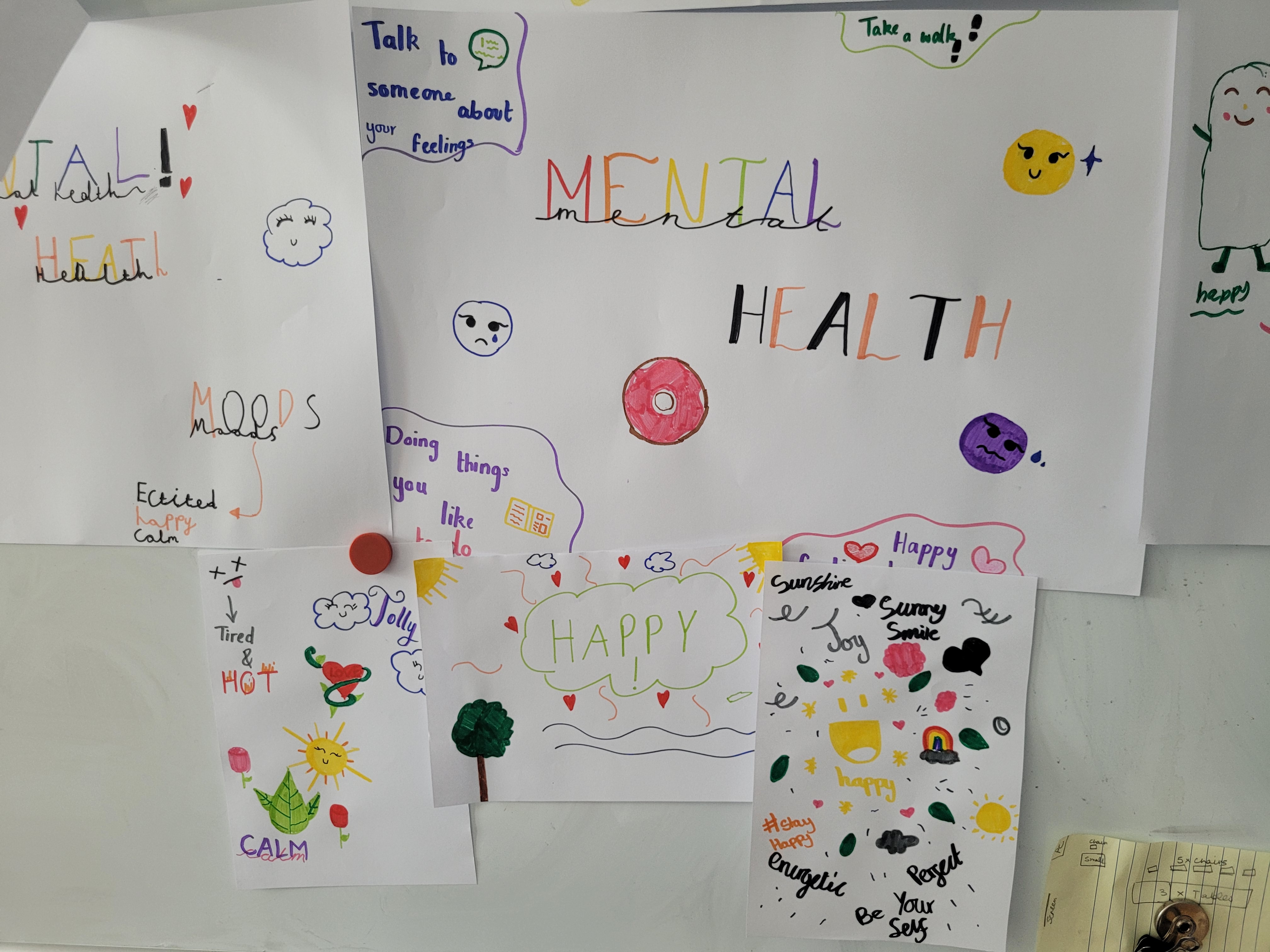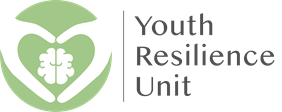What colour are you feeling today? Using the arts to explore mental health in the classroom
In this blog, Small Grant recipient Caitlin Aspinall writes about a workshop QMUL researchers ran with local school children to design a logo for the Youth Resilience Unit.

Drawings representing mental health produced by children at Brampton Primary School.
Mental health includes our emotional, psychological, and social well-being. It affects how we think, feel, and act, and also helps to determine how we handle stress, relate to others, and make healthy choices. Good mental health is important at every stage of life, from childhood and adolescence through to adulthood and older age. One aspect of lifelong good mental health is emotional resilience. This refers to a person’s capacity to prevent, overcome, and even thrive following the experience of challenging or stressful events. It can be understood as an individual characteristic (e.g., grit, perseverance, determination), but also includes one’s use of external resources (e.g., seeking social contact, participation in community groups).
In the Youth Resilience Unit (YRU) at Queen Mary University of London, we are investigating factors that can contribute to emotional resilience in children. To visually capture the co-production ethos of the YRU, and to help attract young people to take part in our studies and co-researching opportunities, we wanted to create a YRU logo in partnership with the young people we seek to support and learn from.
With this engagement project, we had two primary aims:
- Provide a non-stigmatising activity for children to discuss their views on their mental health, resilience, and general wellbeing; and
- Co-produce a logo that represents the YRU, but resonates with the visual identity of young people.
Both these aims were achieved through a one-hour arts workshop at Brampton Primary School in Newham, run by an artist and mental health facilitator (Ali Winstanley) and supported by two research assistants (Milena Nikolajeva and Daniele Porricelli). Other than age, we did not impose any selection criteria on the school and had a prior discussion with the school staff about inclusivity. Therefore, our workshop participants were a diverse group of children in terms of background, mental health status, and disability status which we hope will contribute to the logo resonating with a wide spectrum of young people’s experiences and identities.
Over the course of the workshop, Ali, Milena, and Daniele led 15 students through five alternating group discussions and creative activities. First, the children brainstormed about what "mental health" is, starting with talking about physical health versus mental health, and the importance of both. Second, the children were asked to draw what they imagine having good mental health looks like (what colour is it? does it have a shape? is it an image, character, or pattern?). Third, building on the first creative exercise, the children discussed what makes them feel better if they're not feeling very mentally healthy (what tools do they use? what lifts their mood?). Fourth, the children were asked to illustrate some of the things they use to make themselves feel better. Finally, the group reflected on what they had done in the day's session, discussed what images they liked best, and had an opportunity to ask any questions.
The selected age group (8-10 years) engaged strongly with both the discussions and the hands-on arts activities, and depicted mental health in many shapes and forms. For them, good mental health meant feeling relaxed, positive, and happy about themselves, as well as being able to speak to others about their problems and insecurities. Interestingly, nature featured strongly within the children’s artwork and discussions about good mental health. For example, one of the children drew a healthy flower and added: “You grow and grow into happiness!!”. Taking care of a pet, watering a garden and other mindful activities such as walking in the park with family and friends, reading and writing were also common themes. The children successfully translated these concepts raised in the discussions into creative and insightful images in the artistic segments. Before leaving, they voted on their favourite segments using coloured tokens deposited in cups. The children were then able to take home their artwork and an information sheet for their parents/carers to continue the discussion about mental health and wellbeing with their families.

Following the workshop, the research team met with digital artist and mental health researcher, Sophia Ppali, to debrief and brainstorm logo concepts based on the children’s artwork and discussions. Sophia then created six logo drafts for all the children of Brampton Primary School to vote on. The votes are in and the winner is… this lovely green logo!
While most aspects of organisation and delivery of the workshop went smoothly, we ran into some last-minute difficulty when Ali fell ill. The workshop was rescheduled, but as the end of term was rapidly approaching we had to make some adjustments to the final logo voting process. Instead of collecting text from the children describing the reasons behind their logo choice as planned, we had to switch to a simpler poll that could be distributed to the school’s children via text or email to their parent or carer. Unfortunately, the simpler poll format meant that the planned thematic analysis could not be done. Instead, we created a word cloud of common themes built from the notes taken by the facilitators during the workshop. The lesson learned? Always have a back-up plan!
After receiving positive feedback and requests for additional sessions from the children and the school, we are now working with Ali to develop and fund a regular in-school programme that would provide drop-in lunchtime arts and wellbeing sessions for students to come, create, and chat through wellbeing issues.
The whole team at the Youth Resilience Unit would like to extend our sincere thanks to all the staff, students, and parents/carers of Brampton Primary School.